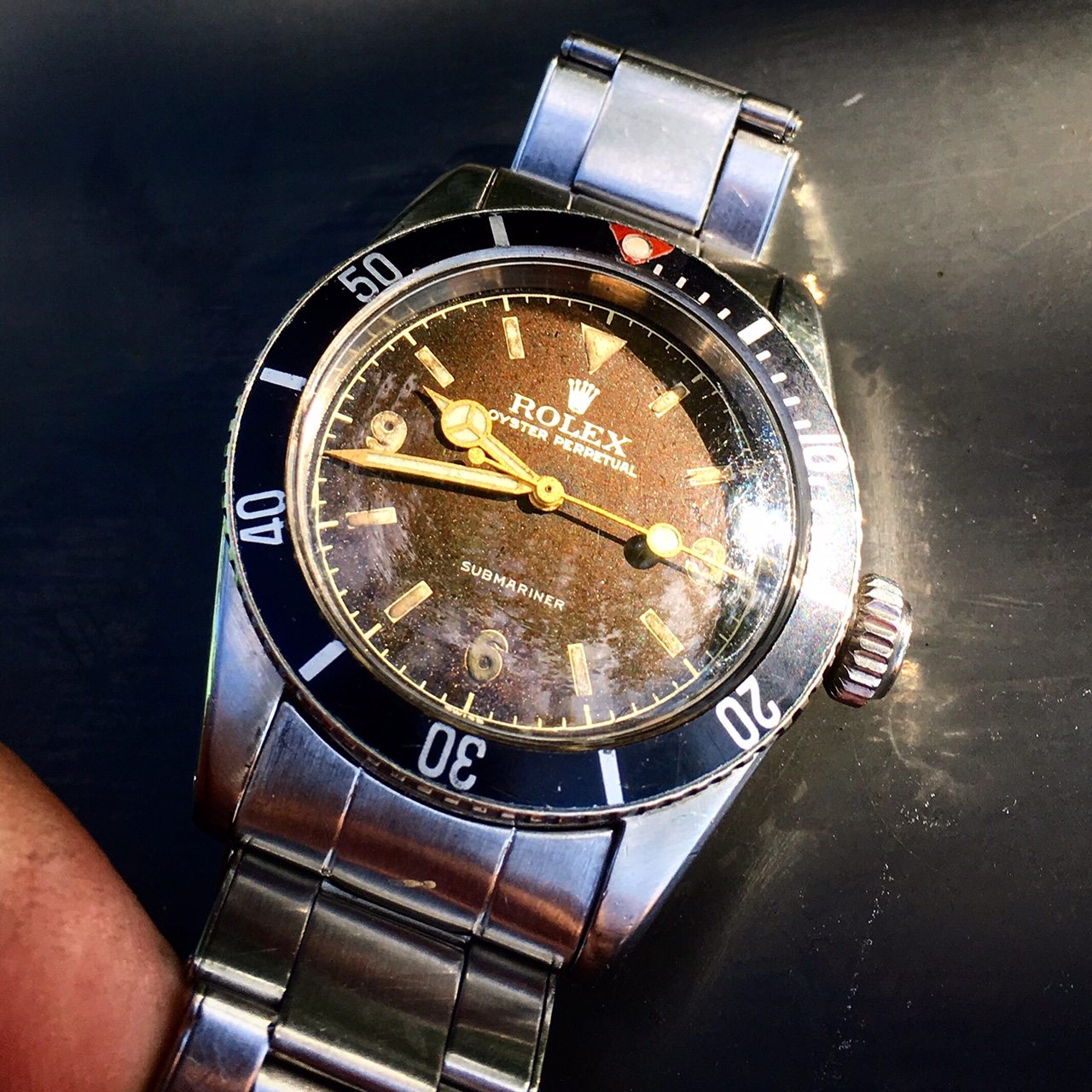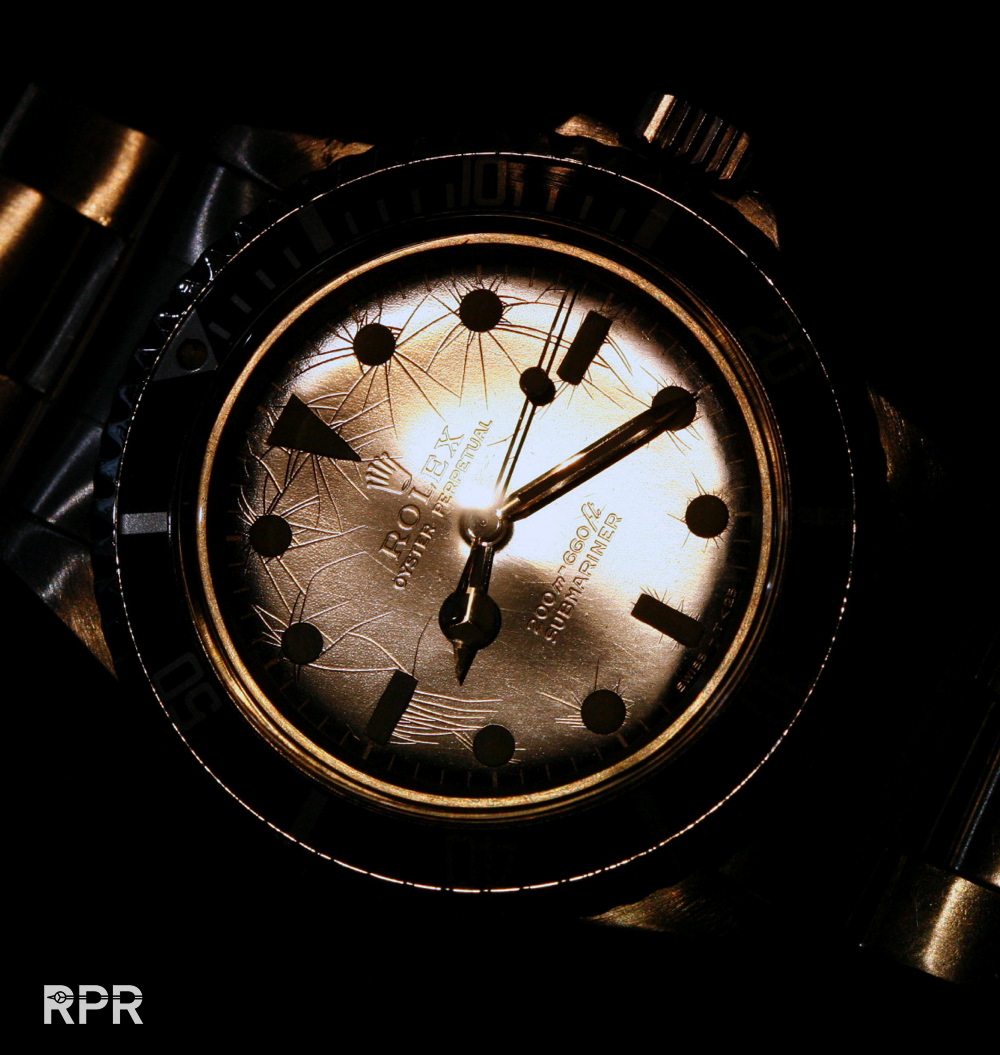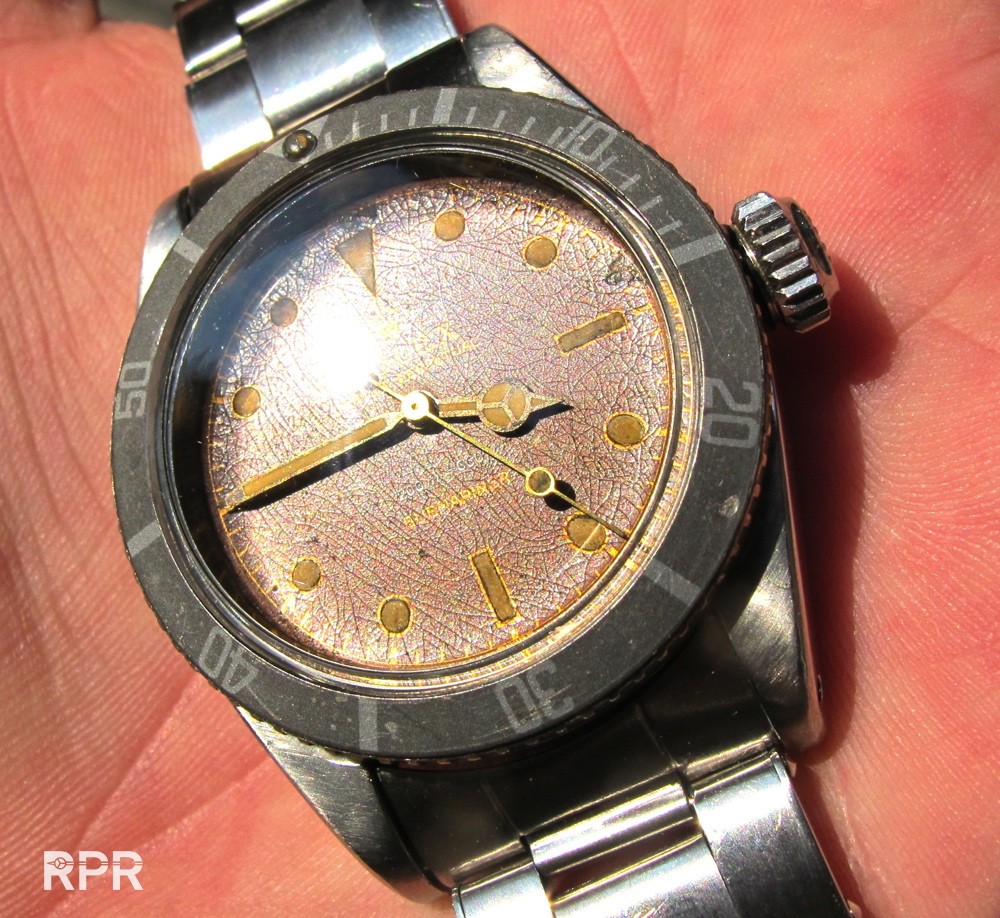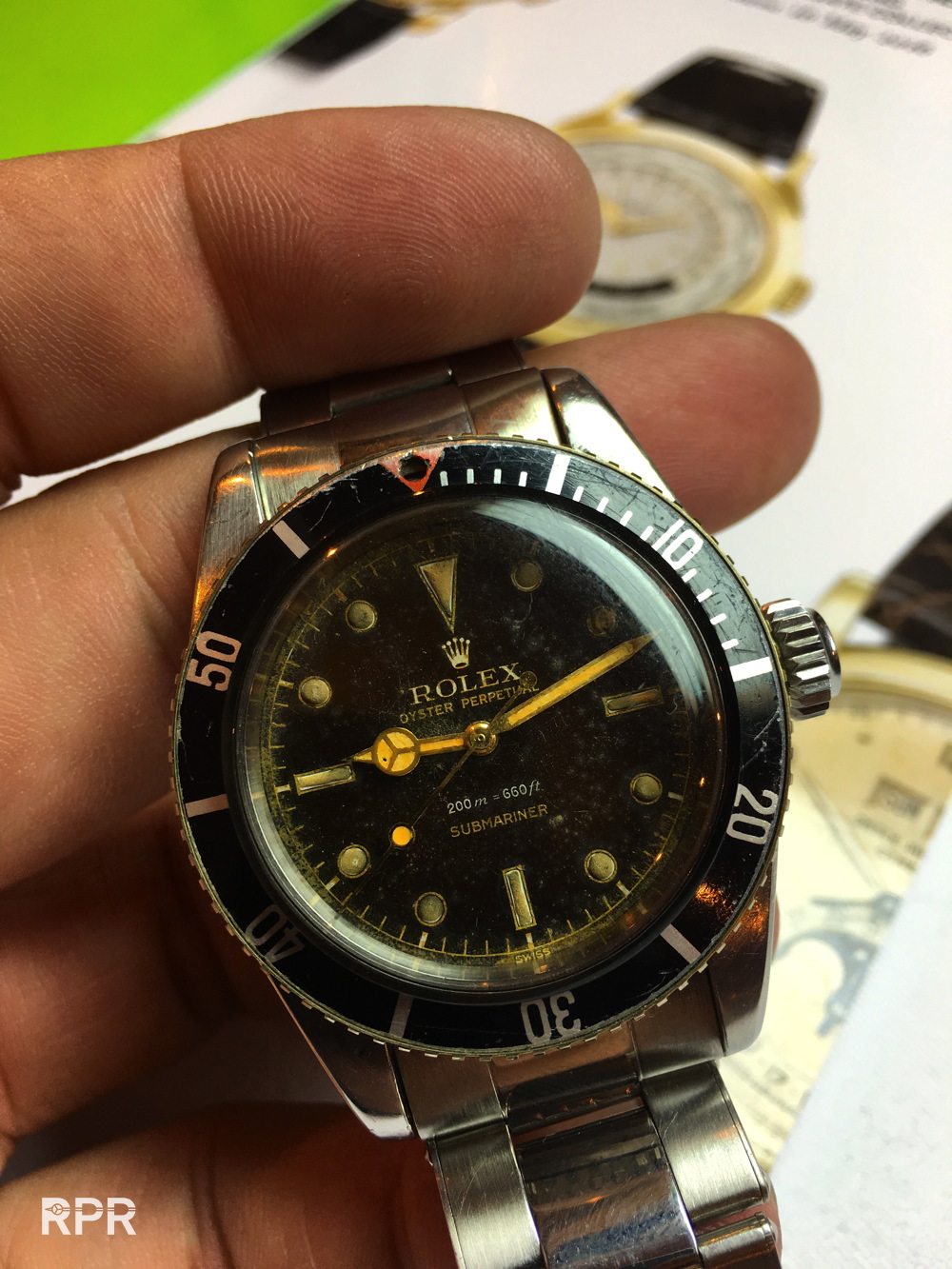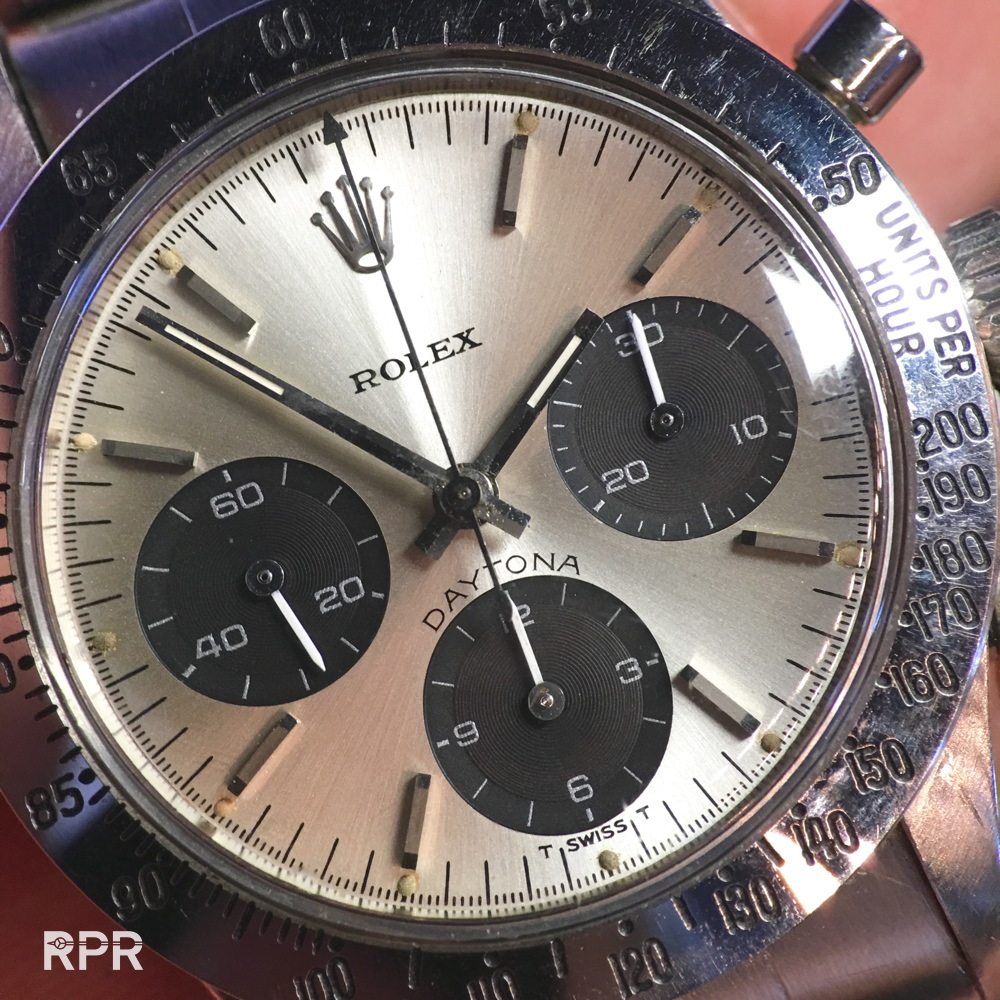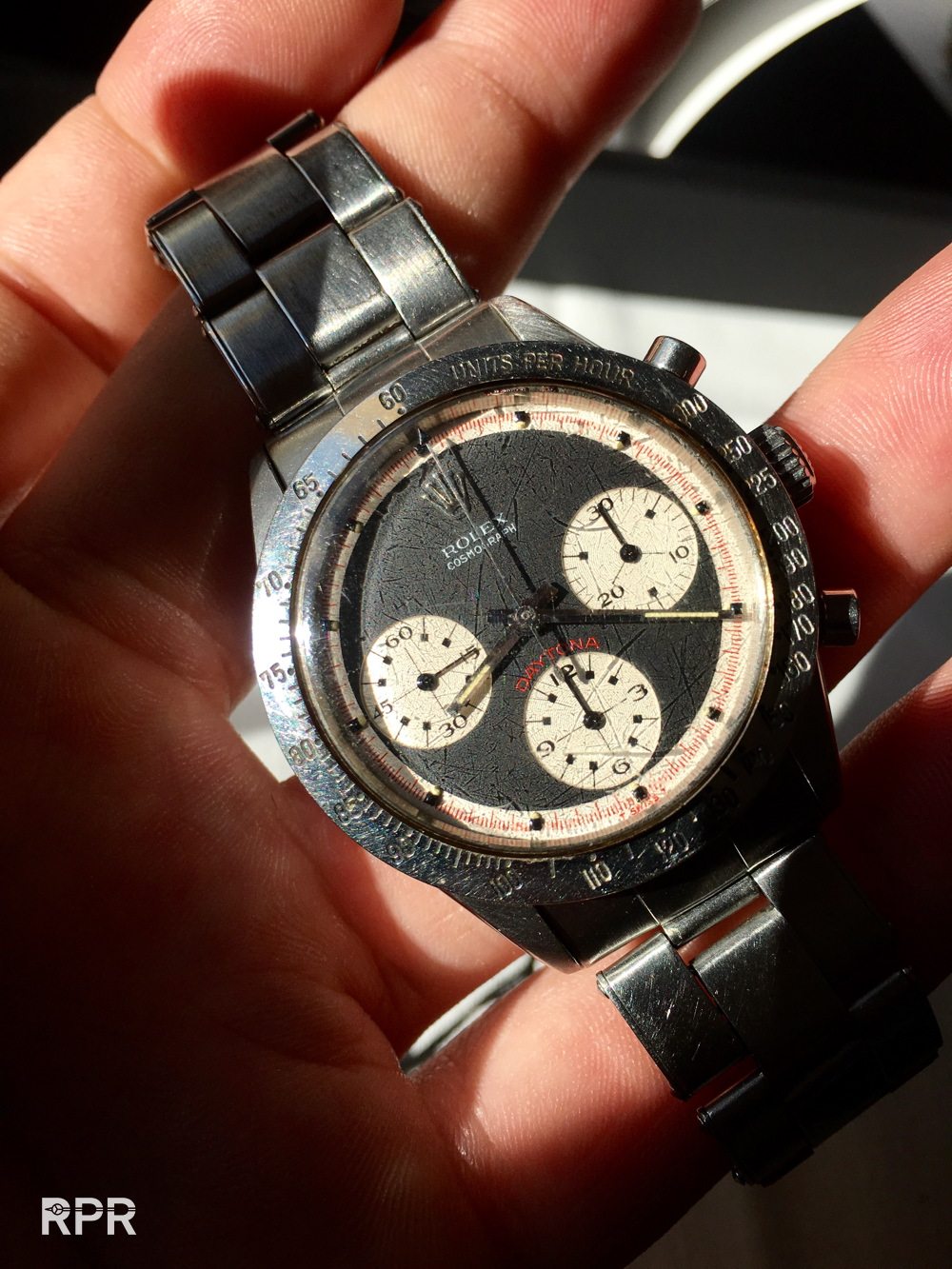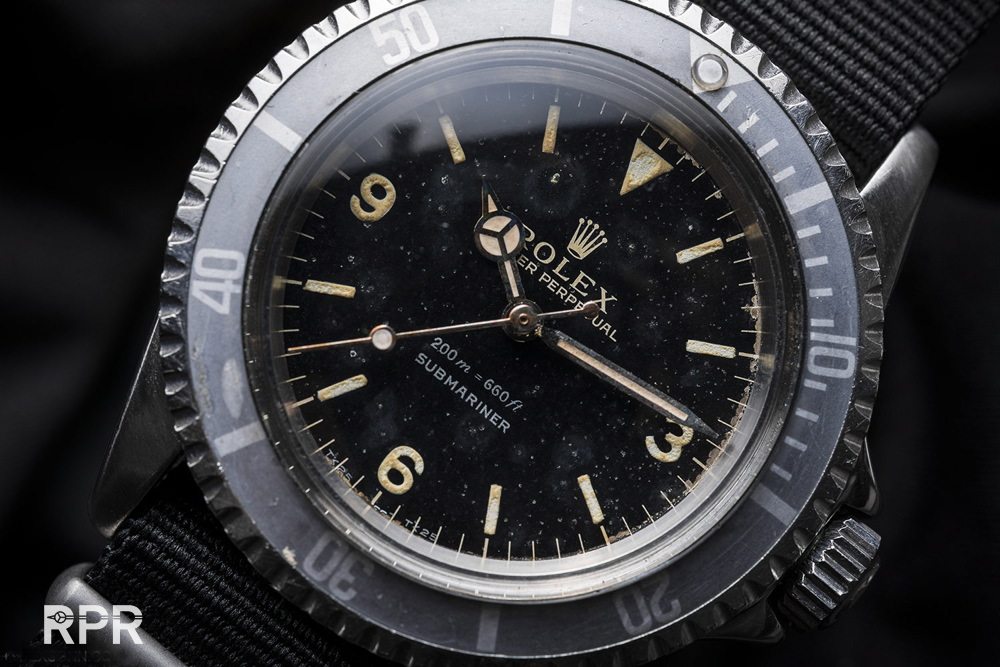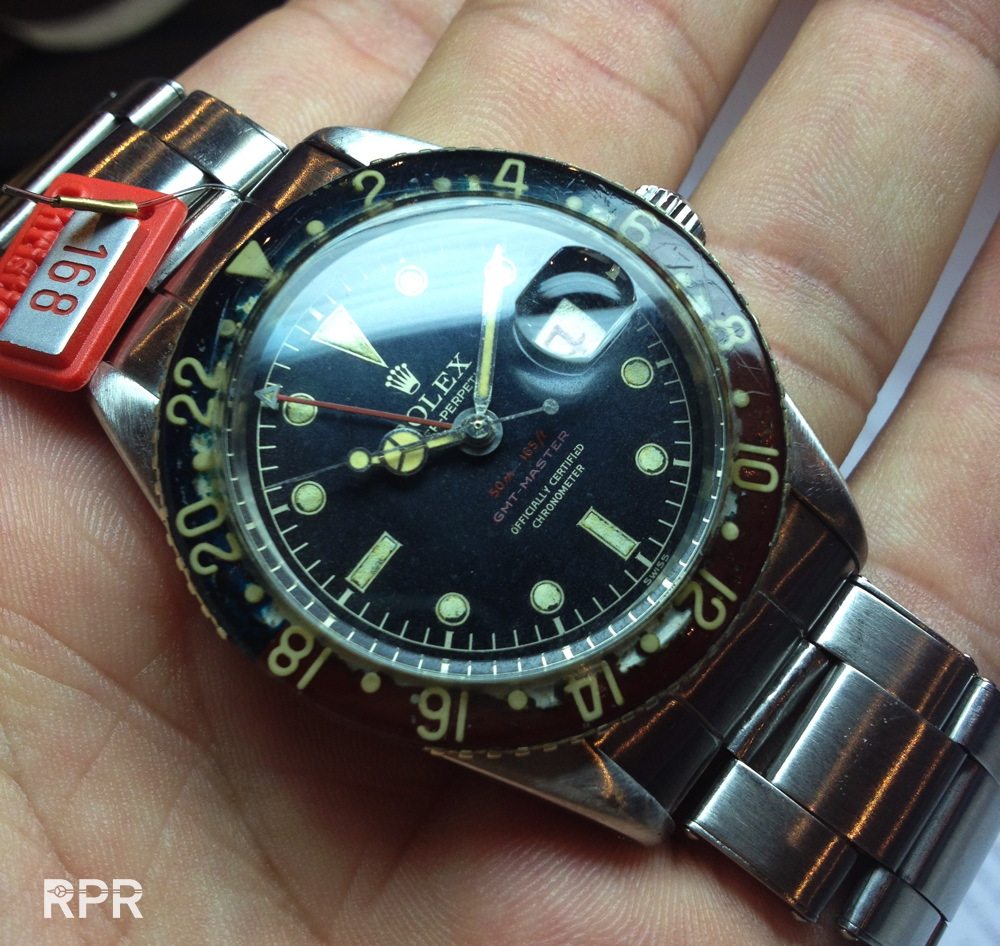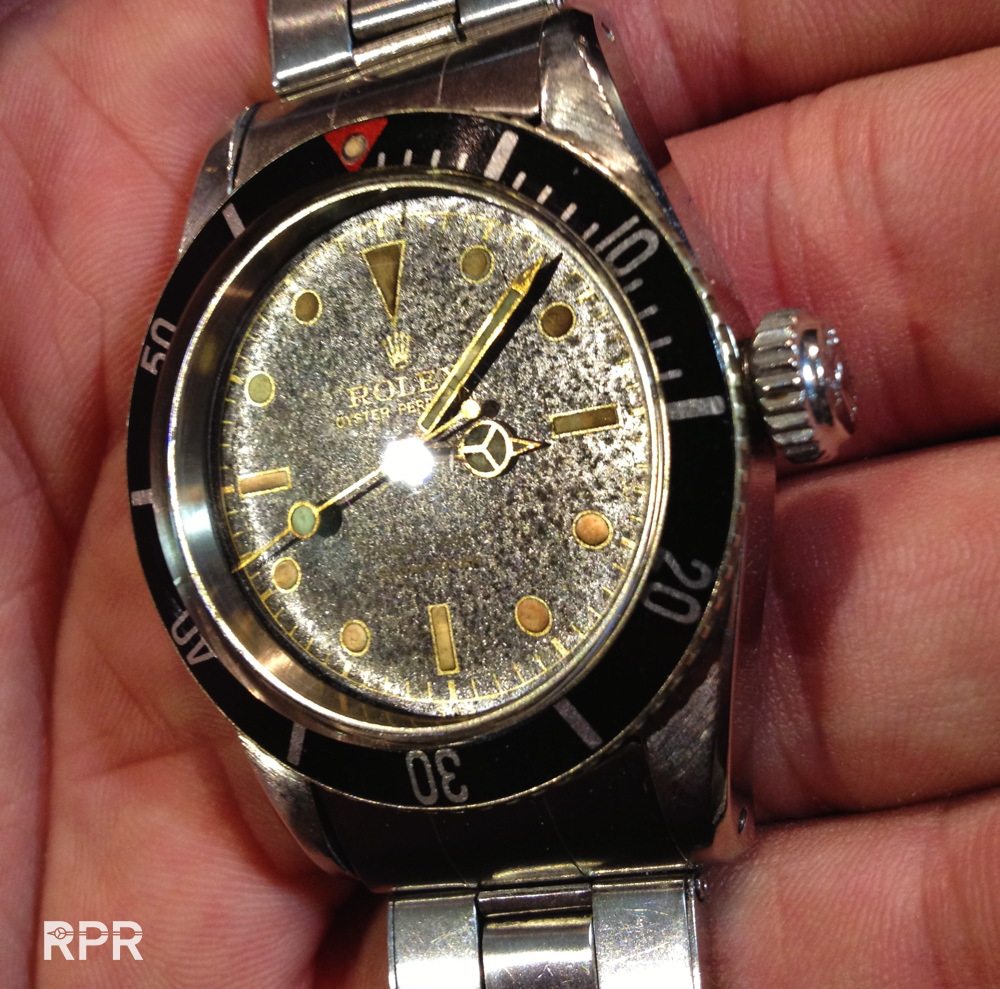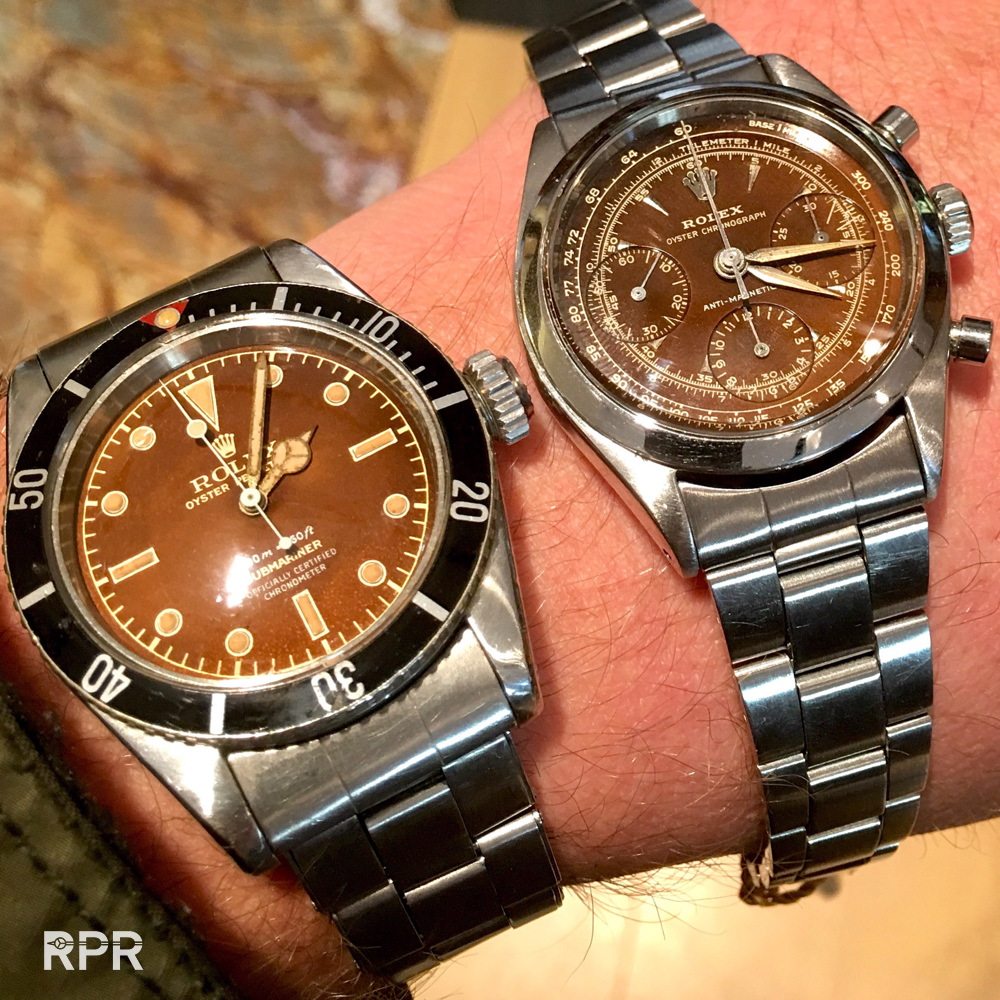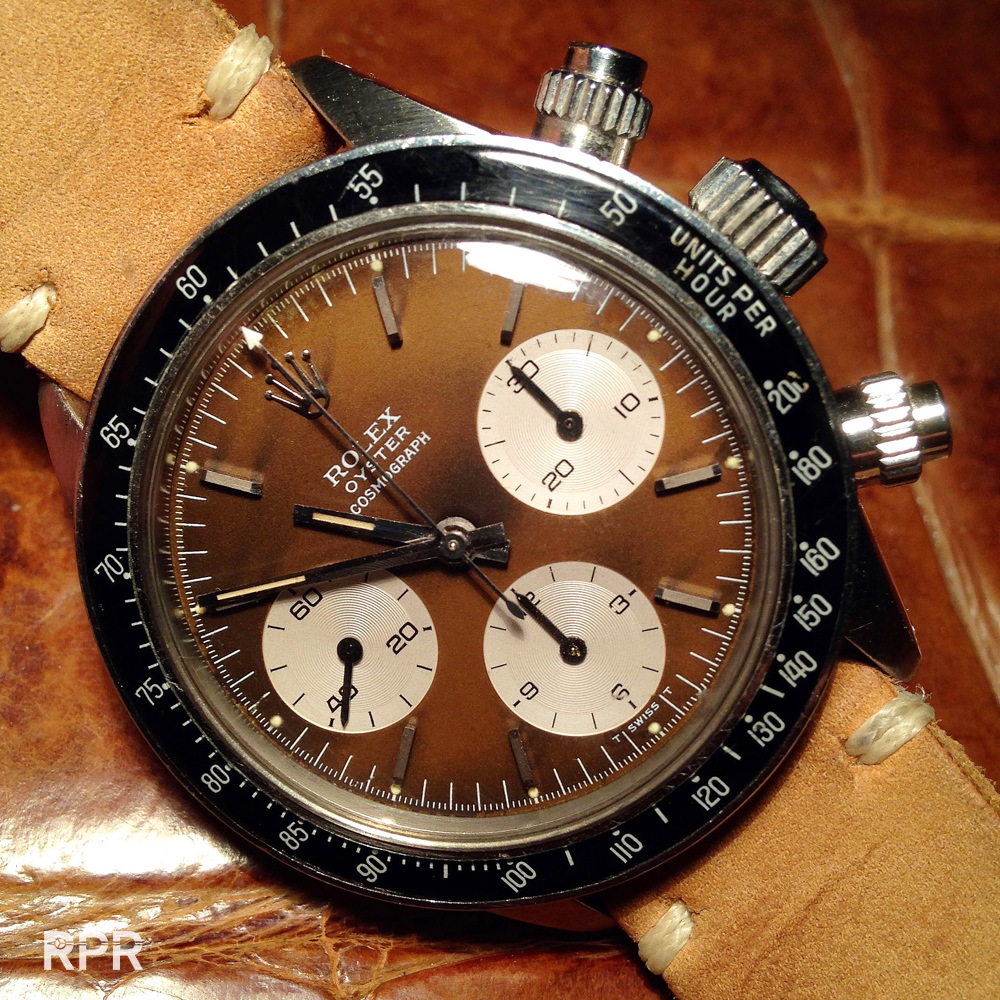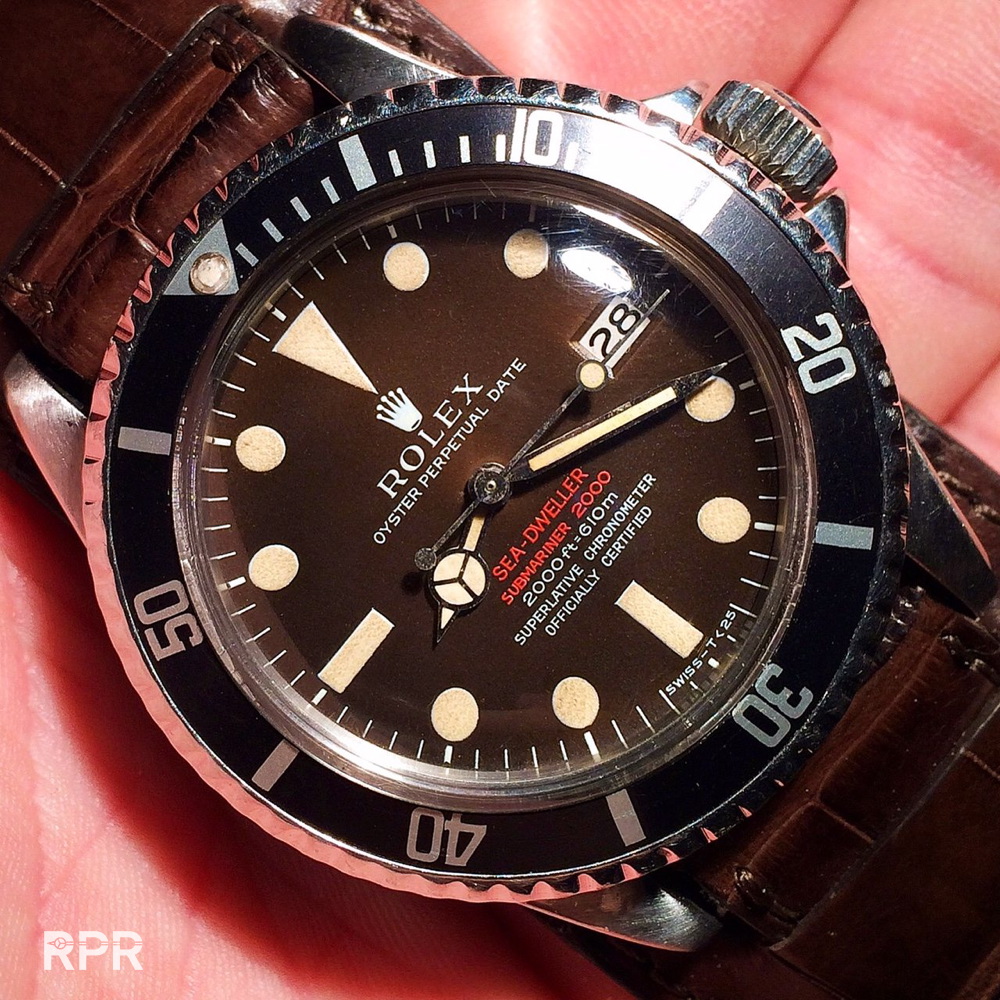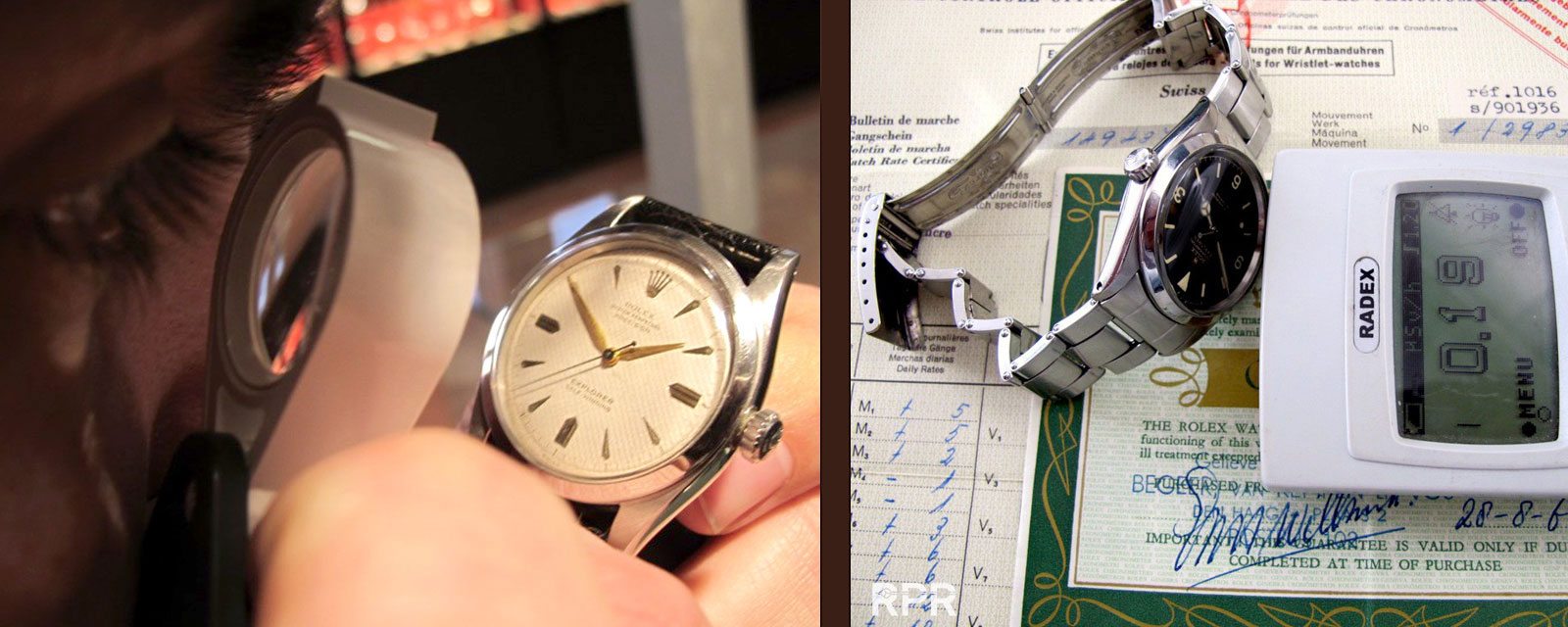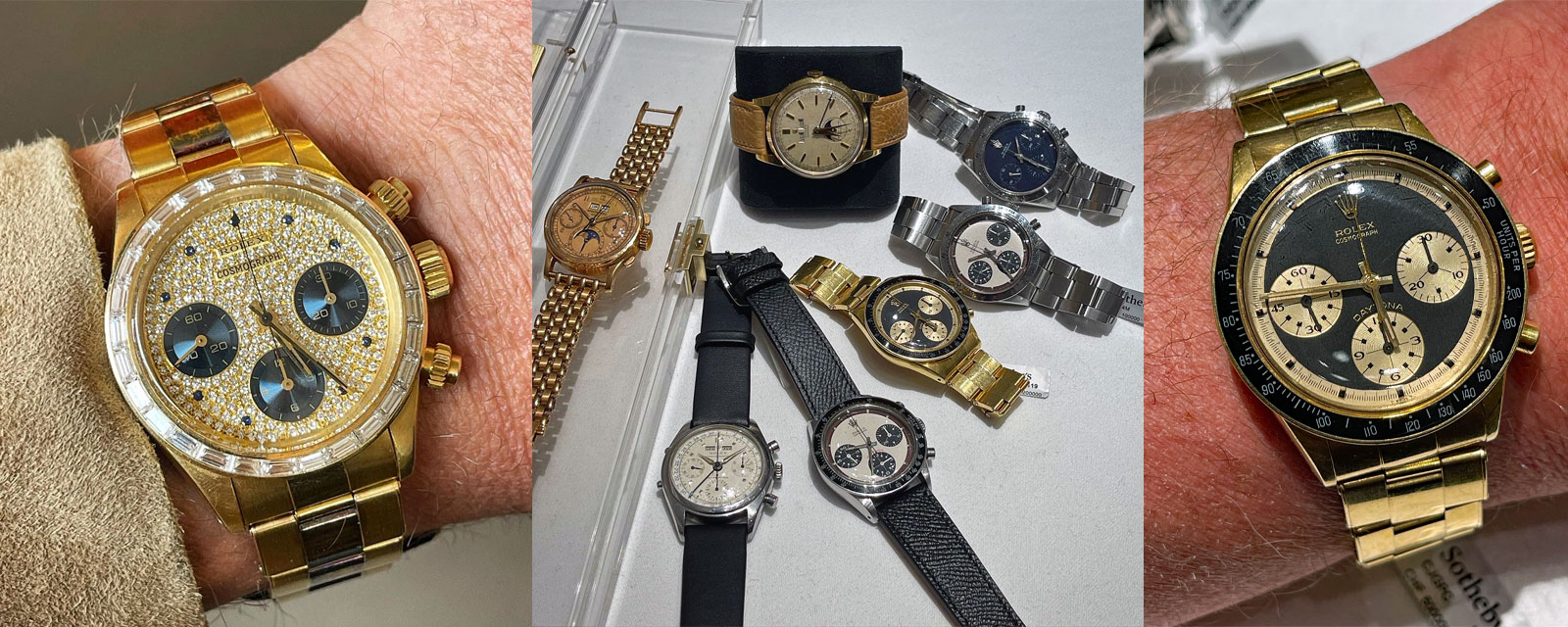The definition of “Tropical” has been abused too often by privates and dealers in the market. Naming a damaged dial an original tropical is not ok. The tropical effect rarely occurs when a old Rolex dial has been preserved undamaged and worn carefully back in the days in heavy sunlight and then got stored in a dark place for years. Something thats quite difficult to achieve and therefor super rare. Tropicals have undamaged original luminous and the dial changed color due to the UV rays and storage and the surface is still perfectly glossy…
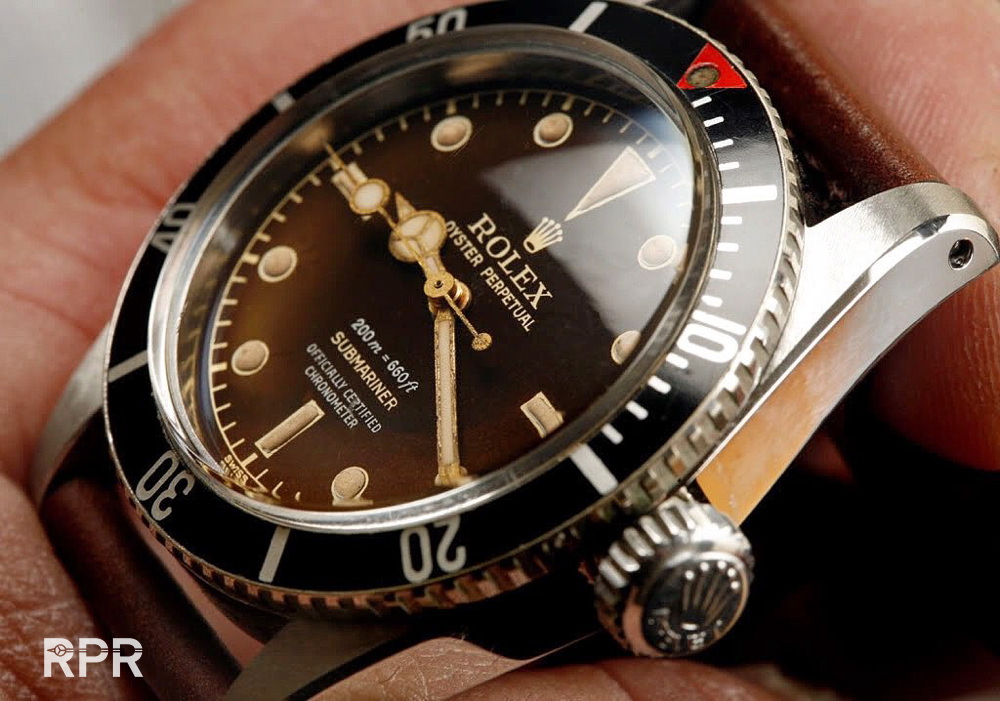
Adding the word tropical in your add actually gets you more attention but at the same time confuses the market when they finally see a damaged dial instead of a nice faded tropical one. Why misleading a buyer when you want him to become your customer or friend?
![[linked image]](http://rolexpassionreport.com/wp-content/uploads/2016/11/Tropical_5512_exclamation.jpg)
We all together should understand that calling below submariner being “tropical” is nonsense. Yes its faded but then it’s destroyed as well. The lacquer got broken and therefor the dial lost it’s protection. The moisture has demolished the surface and rested in the luminous and destroyed it. The “shitage” effect on below dial merely is a damaged dial done by a waterproof failure (when salt and/or chlorine water entered) after heavy careless use that destroyed the lacquer and all luminous. It’s not rare and has nothing to do with tropical and this uploaded offer is a perfect example. Many of these watches should have been serviced back in the days where Rolex would had swapped the dial and hands and make it waterproof again. It’s a collectors failure and not a must as some try to sell you!
We all have come from so far and achieve international awareness for the vintage Rolex market, therefor we should be more careful in what is written. We should also be more careful in using the correct description. Just like the term “unpolished” has been abused so often, the term “tropical” should be protected for honest discoloring! It’s easy to complain you don’t share my view but then once you have hold some of these real tropicals you understand what I mean with real tropicals…
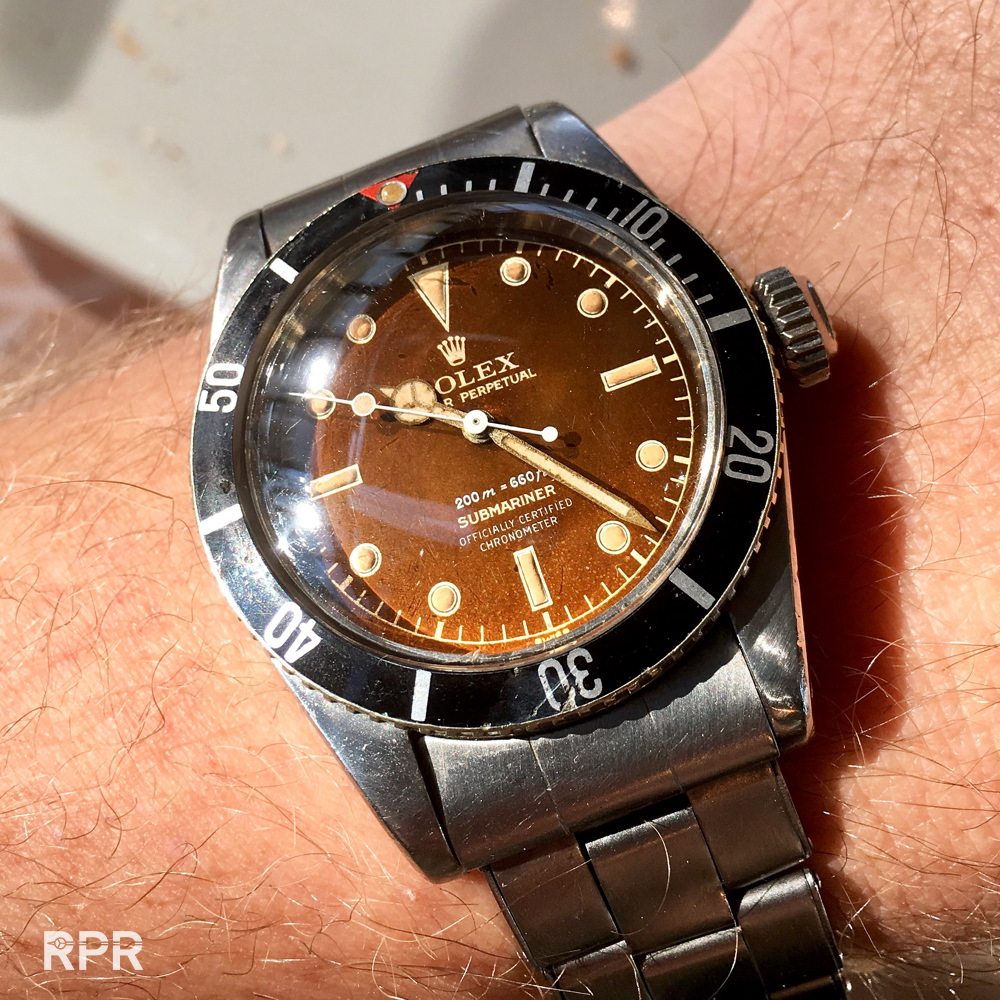
One of the characteristics of these early sports watches is the one colour dial with a lacquer finish that lacks the shiny effect you see on later examples. Radium dust from the luminous that damaged the dial would leave small stains, especially around the markers with the radium paint. Here’s an 1953 high radium example of such an early tainted Submariner ref. 6200…
Note the little hair lines in the lacquer around the radium lume dots of an all original Rolex Big Crown. No damage.
The patina of the dials provides an unique feature, that is not easy visible. You will have to tilt the watch so the dial catches light in a certain angle, before the crack become visible. What exactly causes these cracks is hard to tell but it’s about preservation..
From this angle you clearly see the little hairlines in the glossy finish added on top of the dial to protect it…
This one has already gone beyond tropical. Too long the dial has had UV light and cracked laquer so the dial became damaged on some spots around the minute track. The cracks pull the lacquer off and take the printing with it. There’s nothing you can do ;-(
My guess is, these dials have been stored in a dry place for a long time and with usage the surface started cracking, resulting in this rather bizarre dial pattern. It’s a damage and not a feature!

Or this cracked damaged small crown dial…
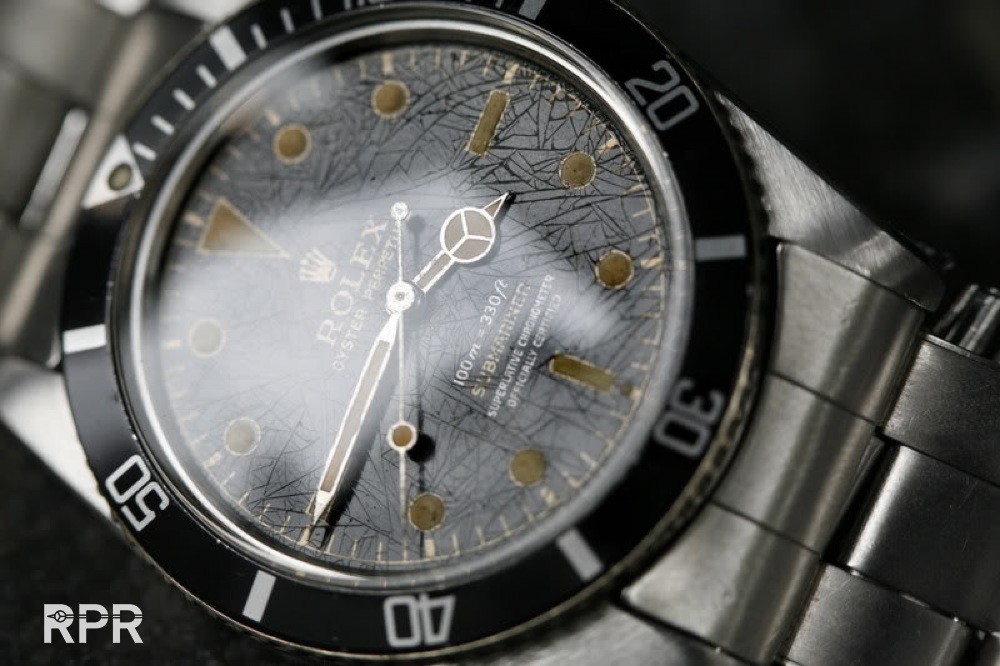
Over the years, the luminous on many watches has been replaced during regular service, due to various reasons. The watch was damaged by water, radium had ‘eaten’ the luminescent paint, destroying the glow in the dark feature or the glowing effect of the paint with tritium was gone as its activity halves after twelve years. Once new luminous was added, it becomes clear that the all over patina is not matching anymore. The luminous looks newer than the rest of the patina, the colour of the hands is different than the markers or the expected radiation is much less than expected. All signs that something happened to the watch. Here are some examples of matching and non-matching luminous. Below clearly the hands don’t match the dial…
This rare Solo Daytona is not really having matching hands with the luminous on the dial. Probably changed during a service..
It’s always clever to study “barn find” as they’re having the perfect all over matching patina… You learn a lot by determine the differences. Besides that the lume is the same color and structure, you see the watch has equally used parts.
Below the moisture has ‘eaten’ the edge of the dial and also left some serious holes through the paint and lacquer…
Water damage because of condensation in watches with radium will change the luminous colour greenish. Precision movement, chronometer tested, waterproof and shielded against dust and a unique waterproof winding crown were the unique selling points during 1930s until 1950s, making models like the Daydate and Datejust extremely popular.
From the 1950s onwards, Rolex had to come up with something new to raise turnover, instead of just focussing on technical improvements for the Daydate and Datejust. Rolex started creating watches for different purposes and audiences, marking the birth of the tool – sports watch concept. For the vast majority of Rolex collectors, this era is by far the most interesting with the introduction of the Turn-O-Graph, Explorer, Submariner and later on the legendary Big Crown.
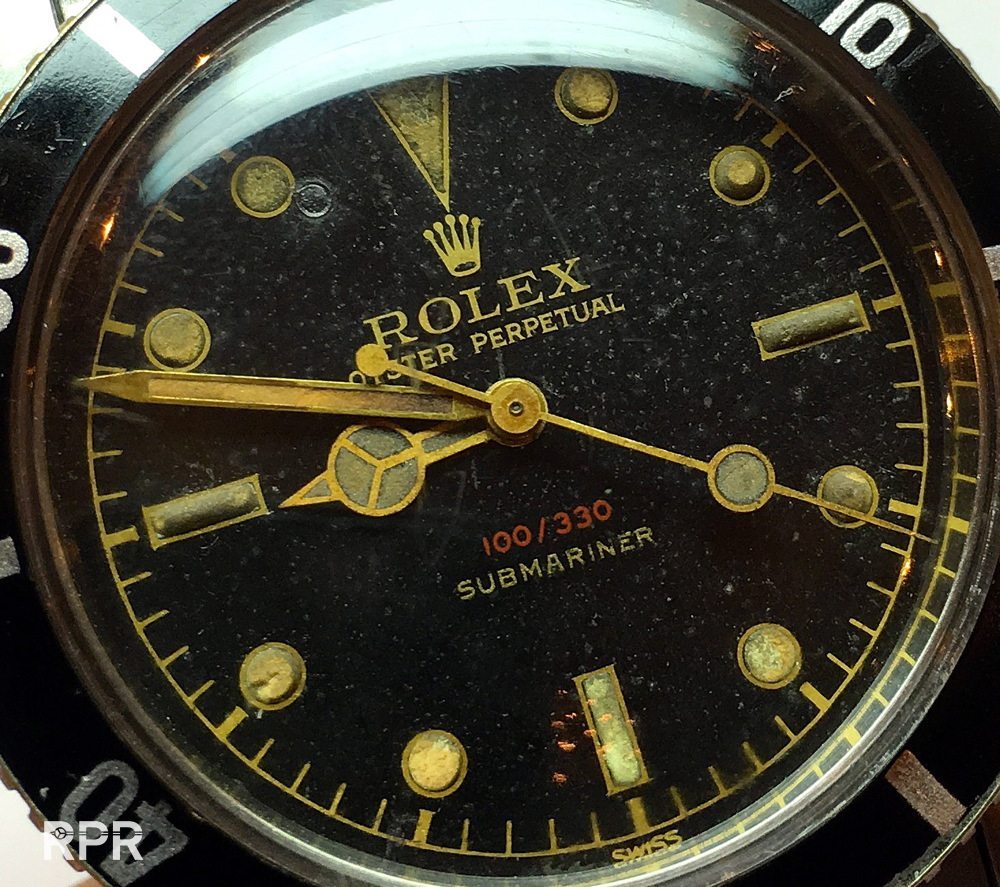
Besides the paste to make the luminous stick, Rolex added the phosphorescent paint on a white coloured surrounds. This was a meticulous job and so well done that you will never see paint outside the surrounds of the markers, if done by Rolex. A dial with the luminous larger than the surrounds it has been added to, is most likely a job done during service to replace the luminous. The Geiger counter cannot always provide 100% proof if a luminous has been replaced, because clever specialists use old radium to redo the luminous. Therefore, always take a very close look at how the luminous was added to the dial.
Above you see the lume has lost it’s volume. The top layer has been scratched off most probably because it was having some dark stains. Then the glossy dial surface was cleaned making the surface matt. This is also a damaged dial. Obviously the steel hands don’t match either. Below perfect tropical is original in every detail. The luminous, the lacquer, the gilt. It’s become unique in it’s sort, one of a kind!
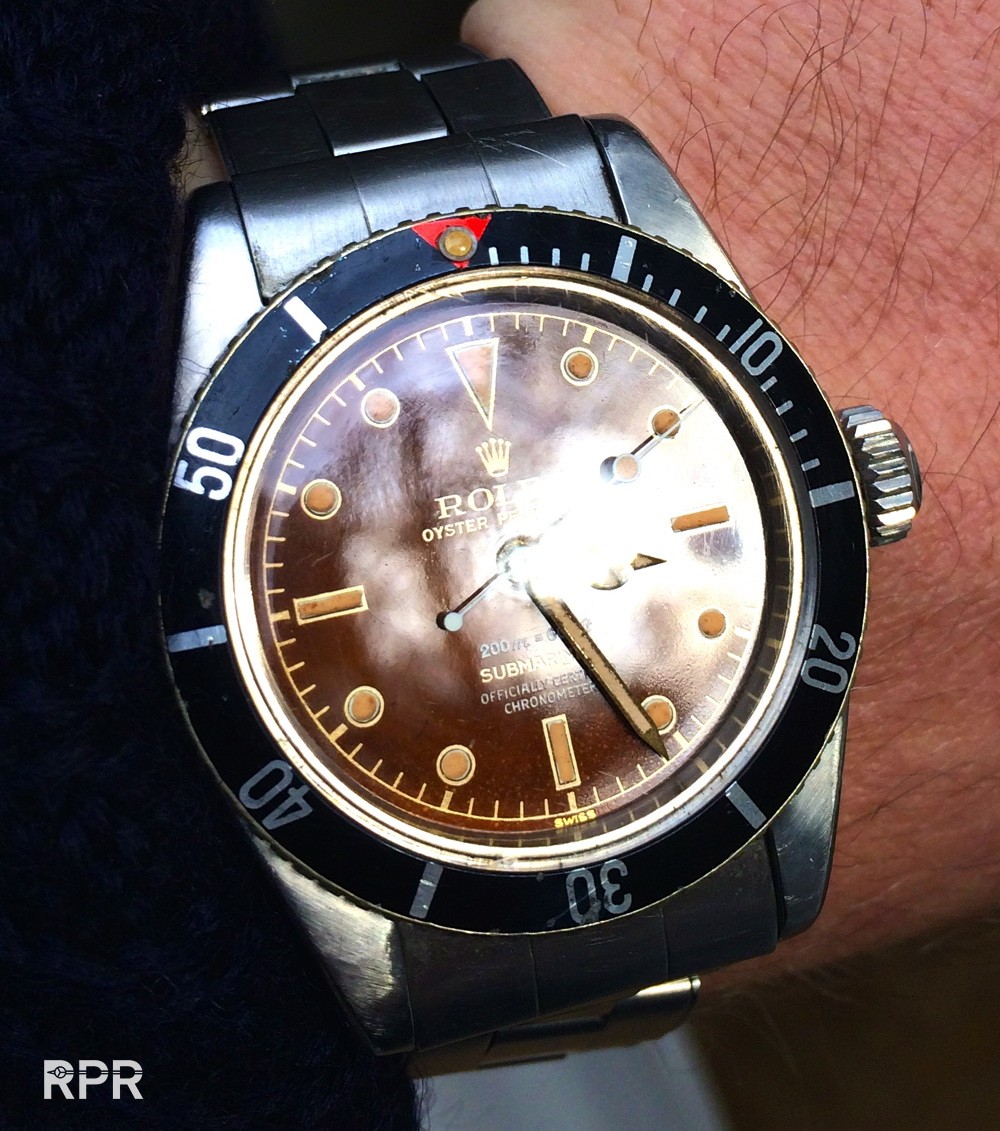
Next is an all honest not so perfect early sports Rolex directly from it’s first owner. This Ref 6538 is also like the double red GMT above from 1956. You see the aggressive radium stains left eating the previous glossy lacquer eating away. This has almost become a feature for pre 1958 high radium dials. A perfect dial prior this period is almost not possible once it has been fitted in aRolex. Maybe a loose dial from a drawer could still be perfect but once you would wear it, the radium dust from the luminous would loosen up and eat the lacquer. Nevertheless the lume dots are in tact and it’s still has it’s original patina and nobody tried to restore it…
To understand the Tropical better you need to know that “Gilt is gold”. Any dial with gold lettering can be called a gilt dial. At least, that is the simple answer. As with most details when it comes to Rolex, there is some debate on what makes a dial true gilt. A gilt dial contains a galvanically applied layer which truly refines the dial. There is much behind the scenes chemistry going on, but what it comes down to is that a black layer is coated to the dial using a galvanic process. This coating, covers everything, except the golden lettering which is printed in reverse under the coating to make it really stand out. A transparent varnish on top of the galvanic layer protects the dial against corrosion and aging and gives the dial the typical glossy finish. Any silver additions like underline or depth meters are printed on top of the varnish.
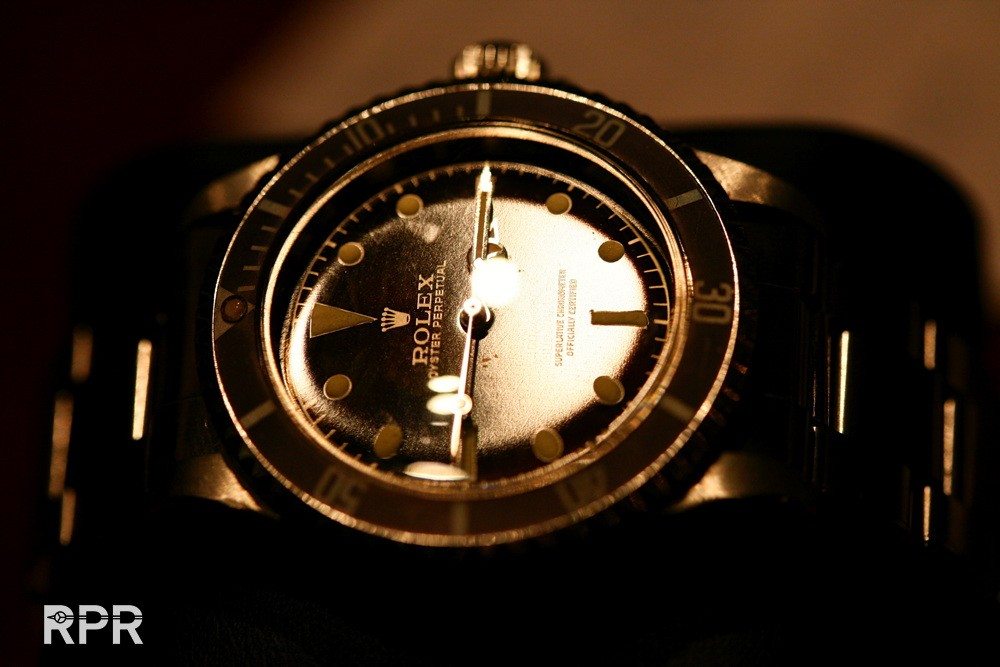
Glossy black above in detail with perfect lacquer and below a tropical gilt dial with little hair lines around the radium luminous…
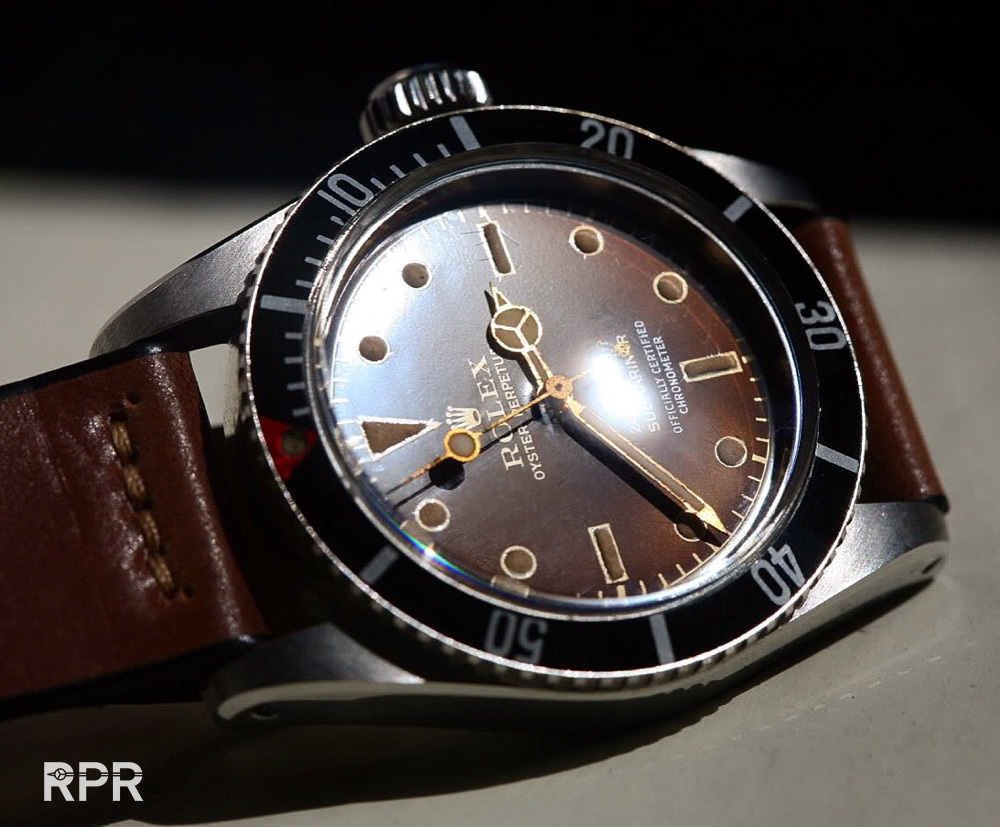
This rather complex and time consuming process of creating a dial makes a glossy black dial with gilt lettering the only true gilt dial. Therefore, a matte dial with gilt is just that, a matte dial with gilt. Galvanic dials show you a certain depth in the print, something these new fake dials don’t have. Besides that, everybody who has handled a gilt dial knows that the glossy lacquered surface is having some small spiders, which this dial is missing as well. Once these become brown because they have been worn in area’s with heavy UV light and then got stored for long time, it’s the perfect “Tropical”.
Another stunning tropical is this caramel Daytona…
From another angle, you clearly see that the lacquer is fully intact and that the condition inside the Oyster has always been perfect.
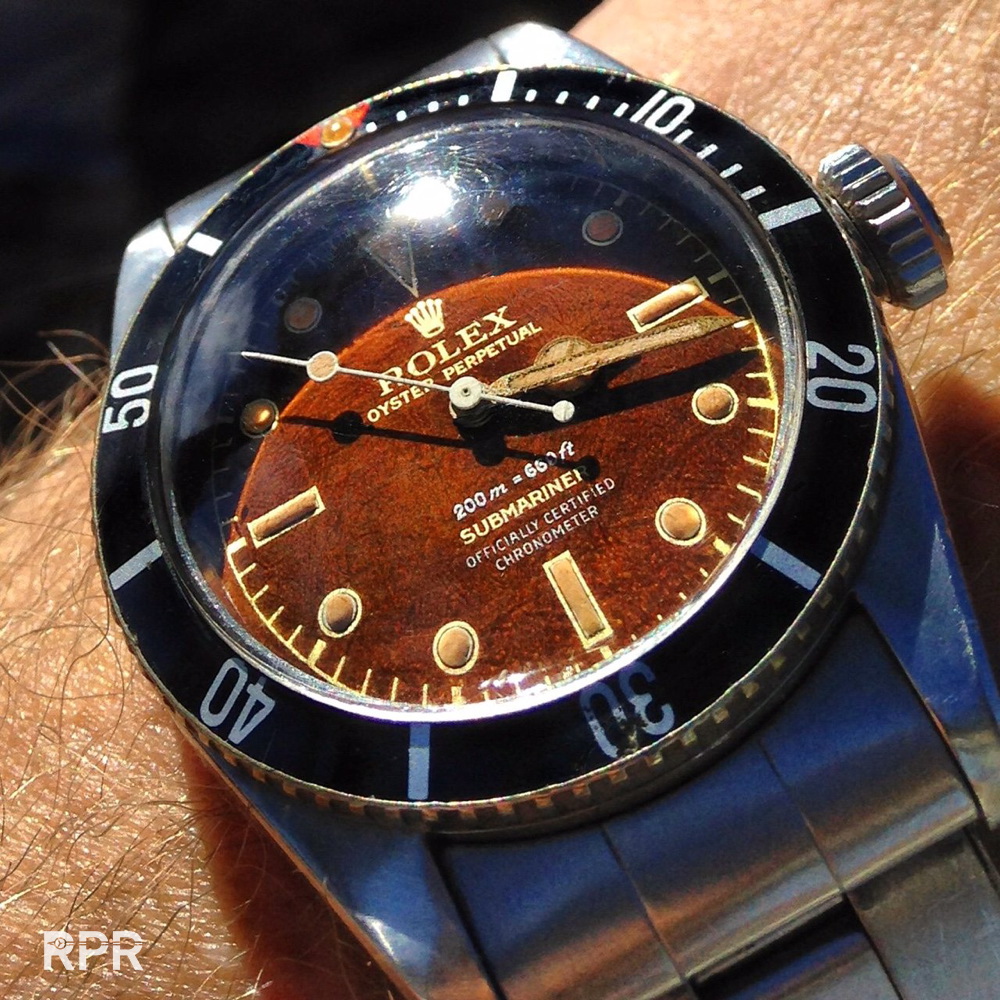
Above 4 liner ref 6538 and below 3-6-9 explorer dialed Ref 5510 are 1958 Big Crown Submariner…

A tropical “honeycomb” anti magnetic dial of the flat bezel U.S. market Ref 6541 Milgauss…
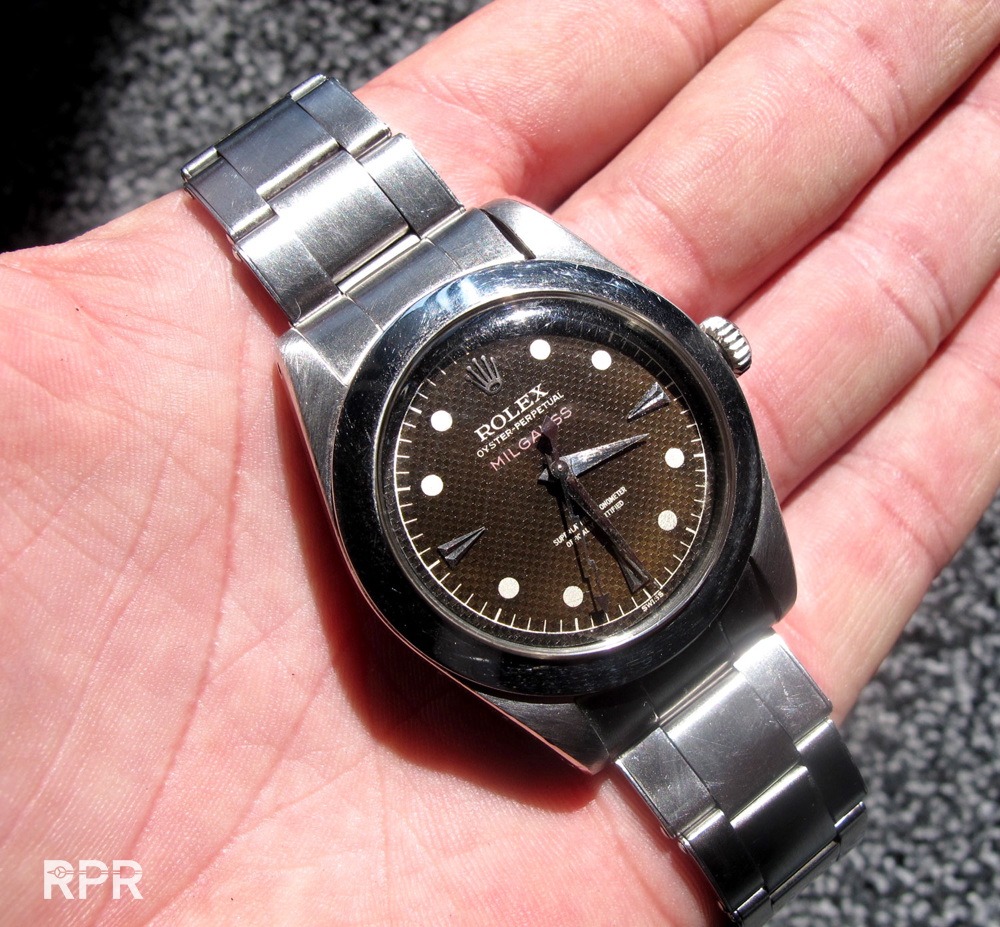
A transitional Tropical with “underline” dial…
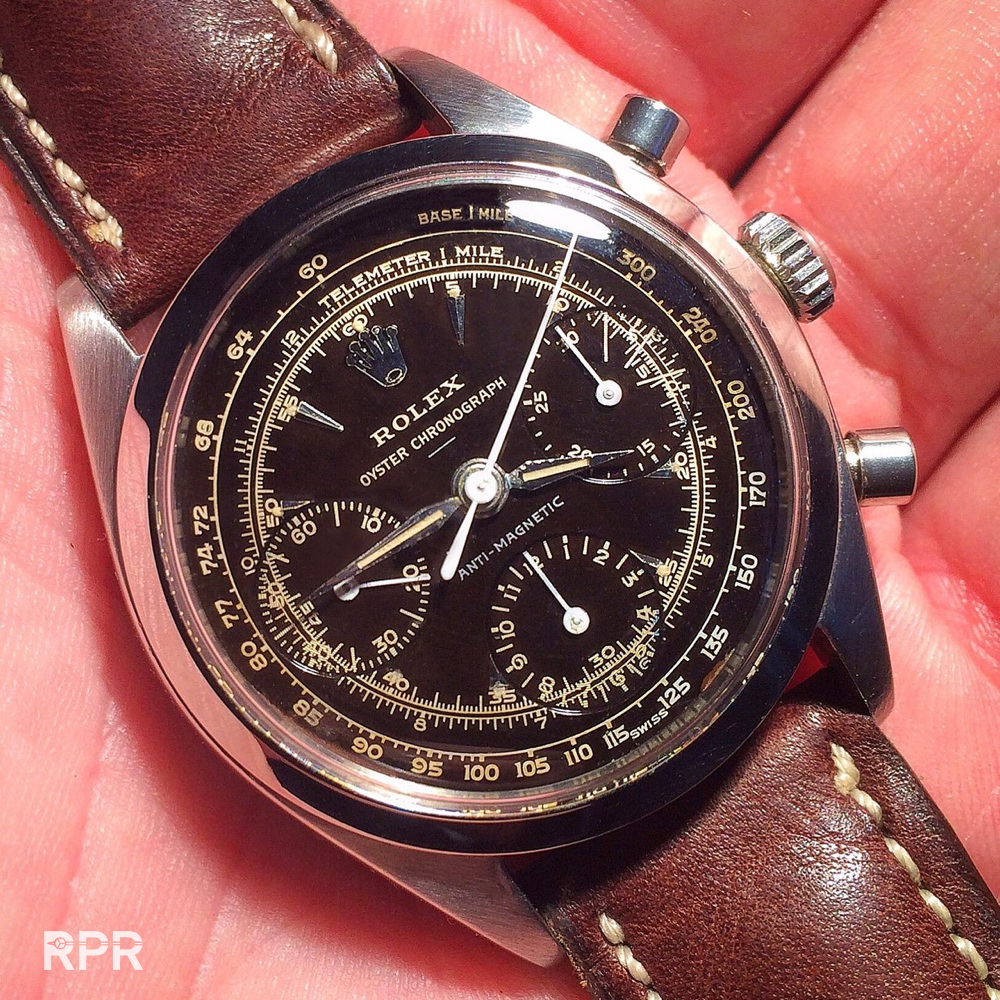
Then a little later end 60-ies we see the tropical effect on early Sea Dweller MK2’s…
All the rest should be called shitage, cracked, faded, damaged. In a condition in which you can’t be sure it will still be the same in a couple of years. As being said, these could become dust and yes everybody is free to enjoy them but please don’t call it a tropical!
If you’re looking to buy a Tropical vintage Rolex please check the trusted offers by our RPM dealers by following this link…
Cheers,
Philipp



